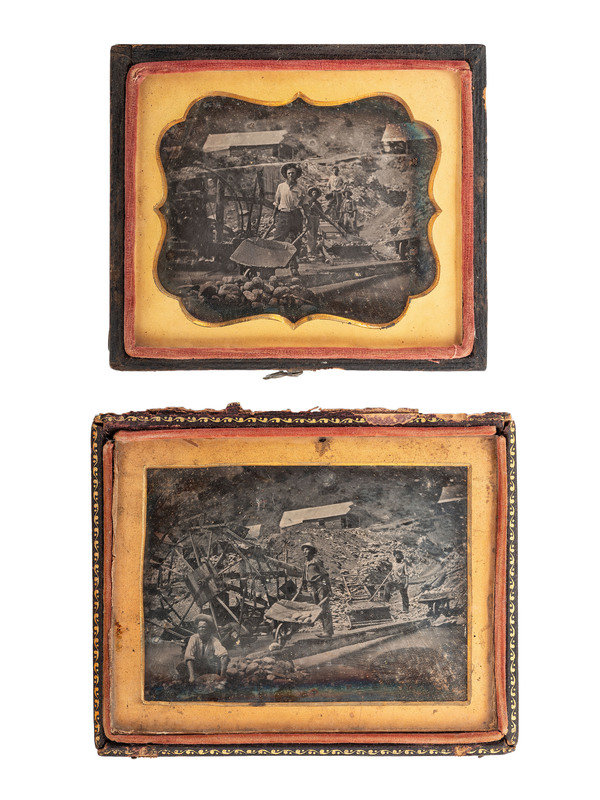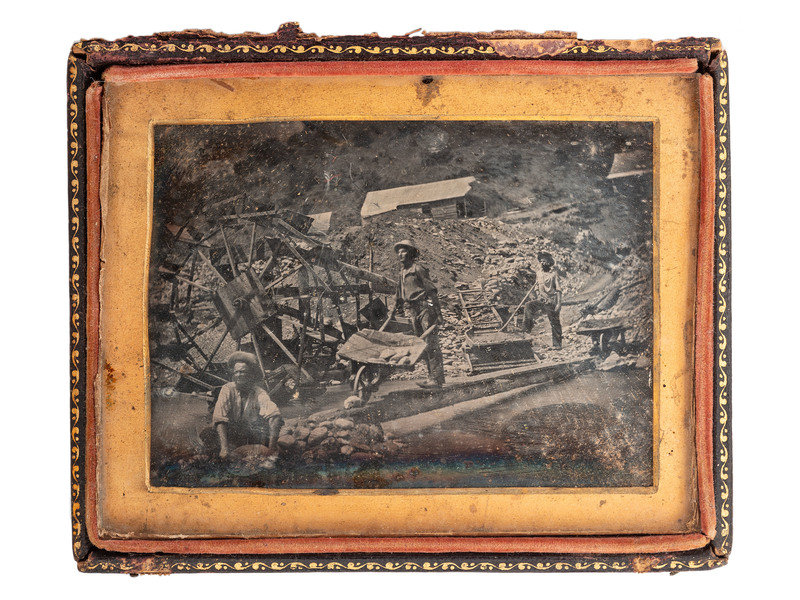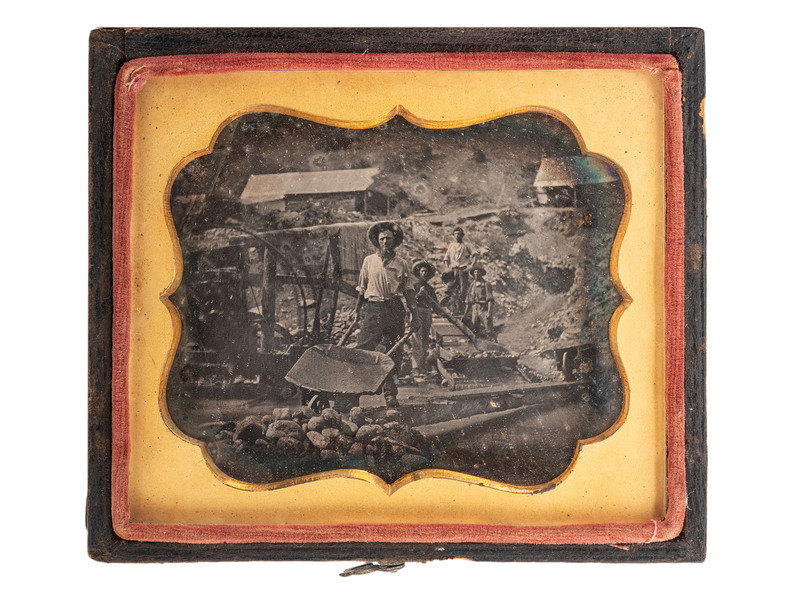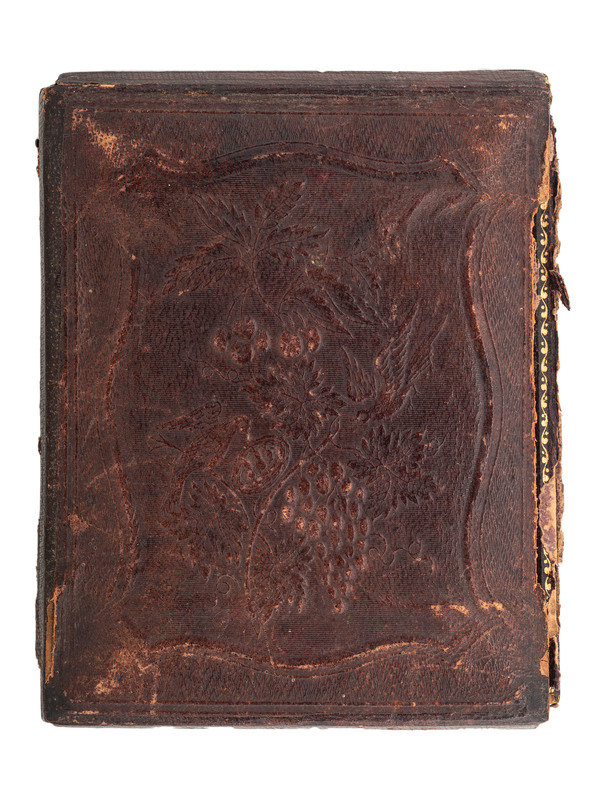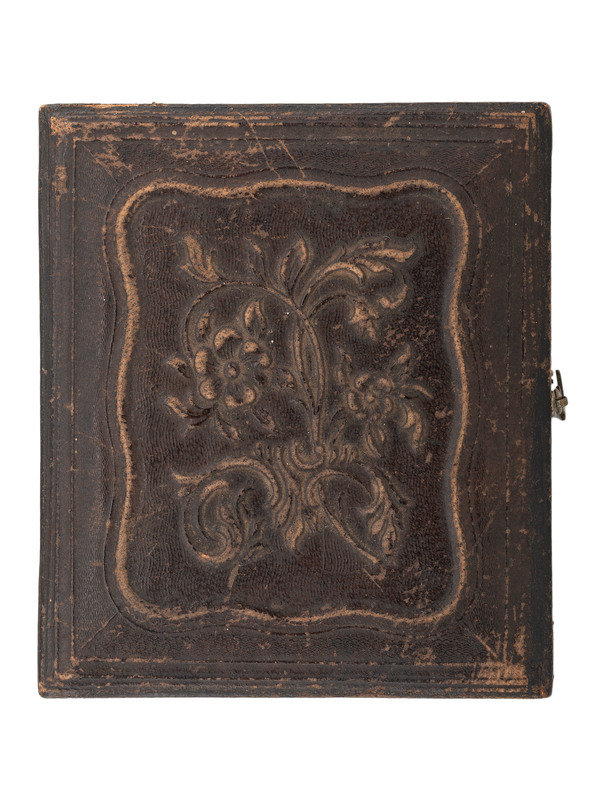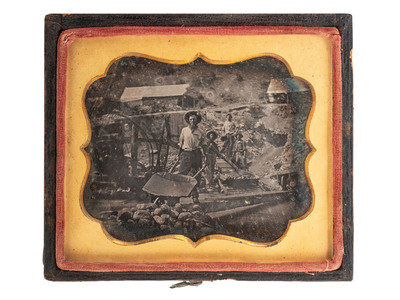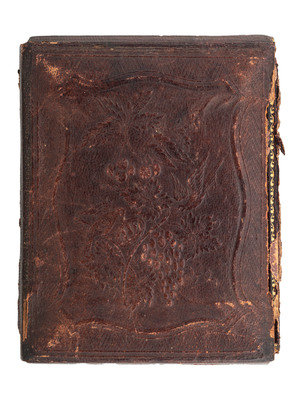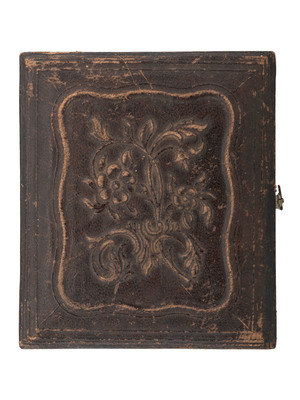Lot 325
[GOLD RUSH - EARLY PHOTOGRAPHY]. Two daguerreotypes of miner William J. Jewell (1818-1885) in the California gold fields. [Poverty Bar, California], [29 July 1852].
Sale 1250 - American Historical Ephemera & Photography
Nov 30, 2023
10:00AM ET
Live / Cincinnati
Own a similar item?
Estimate
$15,000 -
25,000
Price Realized
$60,480
Sold prices are inclusive of Buyer’s Premium
Lot Description
[GOLD RUSH - EARLY PHOTOGRAPHY]. Two daguerreotypes of miner William J. Jewell (1818-1885) in the California gold fields. [Poverty Bar, California], [29 July 1852].
Anonymous quarter and sixth plate daguerreotypes taken at the claim of William J. Jewell and his partners.
The images were undoubtedly taken on the same day, with Jewell as the central figure of each. Jewell is present in the foreground of each image, with his partners visible beyond. In the quarter plate he squats holding a gold pan; in the sixth he poses with a wheelbarrow. The scene shows a waterwheel feeding a "long Tom" sluice box and riffle box. Interestingly, the mat of the quarter plate is constructed of a hand cut piece of heavy brass, suggesting the daguerreotypes might have run out of commercially available mats.
Jewell departed for the California gold fields from Iosco, Livingston County, Michigan, in January 1852, leaving behind a wife and two young children. He commissioned the images offered here to send to his family to show life in the gold fields. Extraordinary details about the images are captured in Jewell's 1852 correspondence to his wife and in his 1852 diary.
Writing to his wife Delilah Smith Jewell (1821-1901) from Poverty Bar, California, on 13 July [1852], Jewel shares his intention to have a likeness made: "I want if it is not too much trouble to have you go with the children to Howell or to Pickney [Michigan] & get yours & theirs miniature Pt [photograph or portrait] taken all together in one Frame or case...and mail them to Louisville Greenwood Valley post office El Dorado Co. Cal. then to me[.] so far from Home would be a Consolation to Look at[.] in return you may expect mine in full costume as a miner running as we term it a coach in your state a (Wheel Barrow)...." On 7 August 1852, Jewell writes from "Middle Fork American River Poverty Bar" describing the images he commissioned. "Send you my portrait in a case separate from the letter you can distinguish me from the rest of the men...it cost me Ten Dollars that to you may Look Large, but I earned it in one Day & night...you look at the picture you will see in the back grounds a House that is from the water 100 [?] yards below that house is the claim I am to work on 30 feet Below the surface opposite the house in the claim.... That man holding the Barrow on the Log is one of Davis partners the other is Charlie Taylor another partner... that Log the man stands on is 20 feet Long him & me carried it 1/2 mile the wheel is for carrying water to the tom ... if I was there I could show you from this view many things that I can't write...." While Jewell's letters do not reveal the exact date of these images, his diary entry for 29 July 1852 records the event: "Keep the wheel barrow running to the Tom get my Likeness taken & send home...."
Copies of the 29 July 1852 diary entry and letters quoted above are included in the lot.
See Lot 324, the California Gold Rush archive of William J. Jewell (1818-1885) which incudes the original letters and diary referenced here as well as additional biographical details related to Jewell and his partners.
This lot is located in Cincinnati.
Condition Report
Contact Information
Auction Specialist
